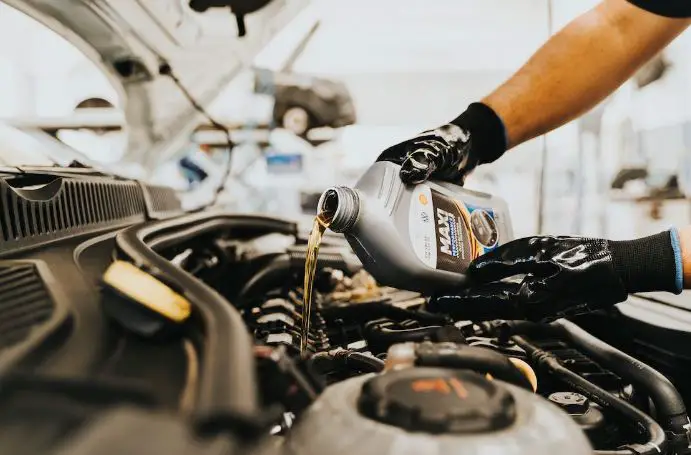If you drive a car with a turbocharged engine, then you’ll want to make it your business to know what a wastegate is. It’s essentially a special valve that is used to control the flow of exhaust gases that flow through to the turbine wheel. In doing so, it regulates how much boost pressure will be present in any turbocharger system.
It might sound rather mechanical and dreary to some, but the wastegate is an absolutely critical component, without which the turbocharger wouldn’t be able to work properly. In today’s blog, we’ll be taking a closer look at the wastegate, how it works and what different types exist.
What is a Wastegate on a Car? What Is Its Purpose?
As we mentioned briefly in the introduction, the wastegate — also known as a turbocharger wastegate — is a valve that controls the amount of boost pressure that the turbo makes overall. It’s important function is to prevent a pressure overload that will cause damage to the engine. Additional boost gives you speed and the engine can take it, but there’s a point where the boost gets too much, and that’s what the wastegate is there to prevent. When boost pressure reaches its predetermined limit, the valve kicks in and ensures safety prevails.
How Does a Wastegate Work?
It’s a fairly simple mechanism that is built with a spring on one side of its diaphragm, with the otherside ready to receive boost pressure. When boost pressure exceeds that of the spring, the wastegate opens and excess exhaust gases rush through. The longer that the spring can hold, the longer the delay in the opening of the wastegate, and thus the greater boost the engine gets.
Adjusting the strength of that spring is one way to ensure that the opening will be delayed longer and more boost pressure can be achieved. One has to be careful, however, because there is a definite limit to how much pressure the boost can take.
Do All Cars Have Wastegates?
The simple answer is no, they don’t. The wastegate is a feature of a turbocharger, so only those engines that are turbocharged will have a wastegate attached. More cars than ever are turbocharged nowadays though, and it isn’t the rare specialist feature that it used to be. Turbocharging is common even on fairly everyday cars and models that aren’t necessarily designed for any performance function.
What Are the Different Types of Wastegate?
Broadly speaking, there are two different kinds of wastegates, namely internal and external wastegates. In this section, we’ll explain the differences between these, and then explain the various benefits of each one in the next section.
What is an Internal Wastegate?
An internal wastegate is one that is integrated within the structure of the turbo itself. The gate is opened using an actuator — which works with the above-described spring system — and diaphragm system which feeds any excess gases into the exhaust system and bypasses the turbine. This is the most common type of wastegate that you’ll find.
What is an External Wastegate?
Asd the name suggests, an external wastegate is a unit that is installed separately from the turbo, typically on the exhaust manifold or header. It’s most commonly used only on high-power engines that you’d find in track-ready vehicles and high-end performance machines. Their inlets and outlets are larger than those you’d find on internal wastegates. Their springs and actuator diaphragms are also larger and capable of handling more pressure, which is why they’re reserved for high-performance machines.
Internal Vs. External Wastegate – Which is Better?
There’s no simple or straightforward answer to say whether internal or external wastegates are objectively better. It depends entirely on your vehicle and your setup.
Internal wastegates have the advantage of being compact, built-in and relatively straightforward in their construction. It’s all part and parcel of the turbo system, so there’s no need to think of it as a separate component. Because it’s built on the inside of the turbo, it means there’s no additional piping to worry about as you would if you were dealing with an external wastegate.
Another advantage of the internal wastegate is that it will automatically channel excess exhaust gases back into the exhaust system and towards the catalytic converter. That makes for a neater and cleaner setup with fewer potential issues. One drawback, however, is that they have a more limited capacity for boosting and will open up a lot sooner than those high-pressure systems you get in external wastegates.
External wastegates offer more precision and more boosting capacity. If you’re looking to boost a high-end engine and give it more horsepower, then an external wastegate is the best way to go. They’re more efficient at dealing with the high boost pressure levels and greater amounts of exhaust gases. Despite needing some extra work to bolt them on, it’s not an overly complex process and can be done fairly quickly.
So, in the end, you’ll have to consider your needs and what your car can realistically handle. When you’re looking at aftermarket wastegates, many will be external because internal ones come as an integrated part in a turbocharger.
If you’re investing in a new internal wastegate, it’s likely as part of a larger overall refitting of a new turbocharging system. It’s important to know the limits of your car and what it can and can’t handle. Too much boost pressure that the wastegate can’t properly handle can cause all kinds of problems in your engine and exhaust systems, all of which can be very expensive to put right. Ask your local tuner for more advice if you need it.
Go Home










